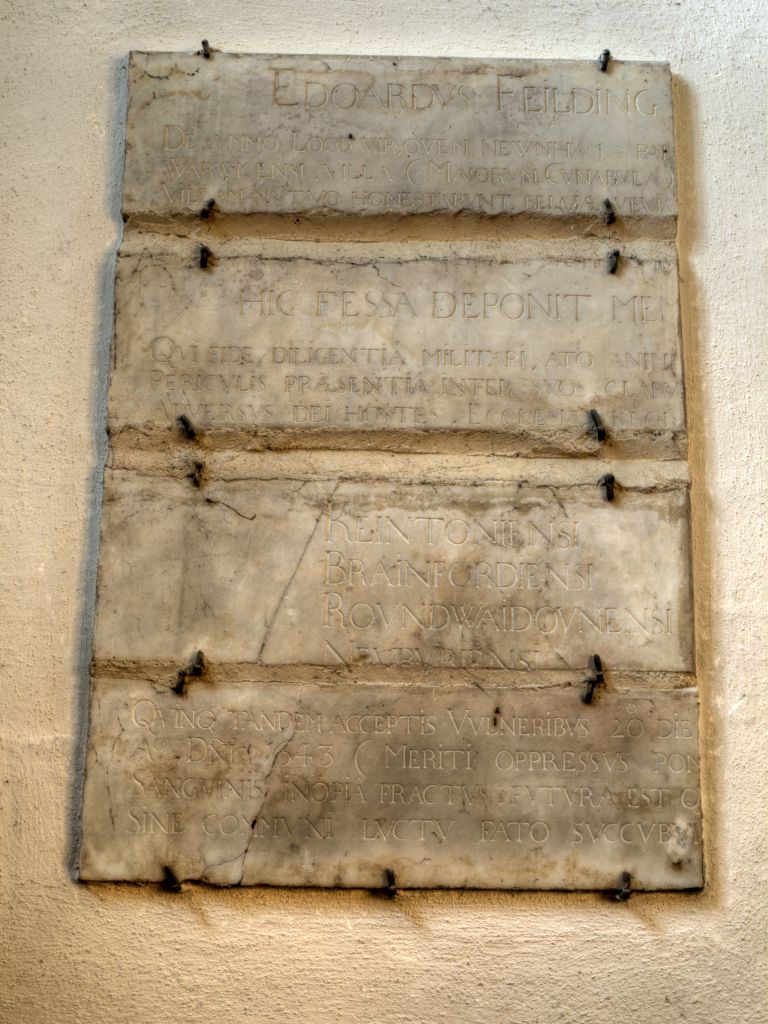|
Four separate white marble slabs - W. wall of vestry to S. of tower - in memory of Edward Fielding, d.1643
[First slab] - Edoardvs FIELDING
de svmmo loco vir, quem Newnham Pad
Warwicensi, villa (maiorvm (unubula) villam mvtvo honestarvnt, Belgiĉ Veviĉ
[Second slab] -hic fessa deponit mem
qui fide, diligentia militari atq animi
pericvlis praesentia inter suos clarv
adversvs dei hostes, ecclesiĉ reg.
[Third slab] - Keintoniensi
Brainfordiensi
Rovndwaidovnensi
Nevrvriensi
[Fourth slab] - qving tandem acceptis vulneribus 20 die
ao.dni: 1643 (meriti oppressvs pon
sangvinis inopia fractvs, fvtvra est q
sine commvni luctu fato svccvbvi
[Translation of above:- (by Mr. P. Vowles) "A man of the highest standing, honoured in his ancestral home of Newnham Padox in Warwickshire to which he added lustre in return; laden with honours from Belgium, Swebia and indeed the whole of Germany, not to mention those from his own dear native land; here laid his weary limbs to rest. A man who was outstanding among his peers for loyalty, devotion to soldiering and presence of mind in utmost danger, he bore himself with courage and success in battles against the enemies of God, the Church, the King, the Laws and all good men at Keinton, Brainford, Roundway Down, Newbury. Then, after the infliction of five wounds he succumbed to his fate to the sorrow of all on the 20th day of September, 1643. (It is a matter for future enquiry whether he was overcome by the weight of his achievement or broken by loss of blood)" Note: Edward Fielding was the brother of the Earl of Denbigh. He died of wounds received at the first battle of Newbury and was buried at the Church of St. Mary the Virgin, Oxford. His memorial there was removed by command of the Oliverians and was probably brought in its pieces to North Leigh by Robert Perrott, a Royalist.) ]
|

|